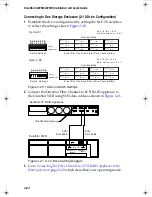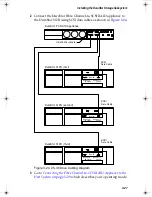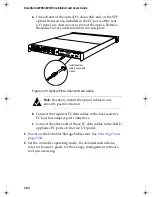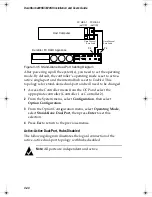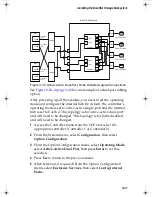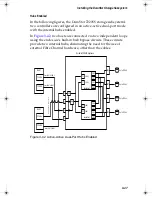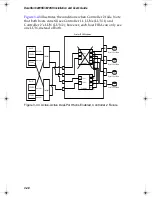
3-37
Installing the DuraStor Storage Subsystem
Caution:
When in active-active mode, the two controllers
communicate with each other using SCSI initiator IDs 6
and 7 on the disk channels. The values of 6 and 7 are
mandatory defaults to guarantee good communication
between the two controllers, and you cannot change them.
Do not configure any other devices to IDs 6 and 7 on the
disk channels, or the active-active configuration will fail to
operate.
Each controller also sends heartbeat messages to its partner
controller. If a controller does not receive a heartbeat message
within a set timeout period, it will kill the other controller
assuming that it has malfunctioned. After killing the other
controller, it will take ownership of the arrays and will activate its
passive host port to assume the defunct controller’s identity.
In this failed-over configuration, the controller will present its
native identity on one host port, and the failed-over controller’s
identity on its other host port. The controller’s host interface
impersonates the other’s World Wide Name (WWN) Identifier and
other identifiers as appropriate to the current Fibre Channel
topology. The arrays native to the controller are presented on the
controller’s native host port, and the arrays for the failed-over
controller are presented on the other host port. This is different
from the dual-port configuration where each array is presented on
both host ports.
After the controller has failed over, you can replace the failed
controller with a new controller, assuming the enclosure allows hot
plugging. The arrays will fail back to the new controller without
intervention. If you want to retry the failed controller, it is
necessary to release the kill line that the survivor asserts. This can
be done with the Disk Array Administrator (Other Controller
Menu, Unkill Other menu option). You can kill the other controller
with the Kill Other menu option.
!
DuraStor IUG.book Page 37 Wednesday, January 30, 2002 10:49 AM


